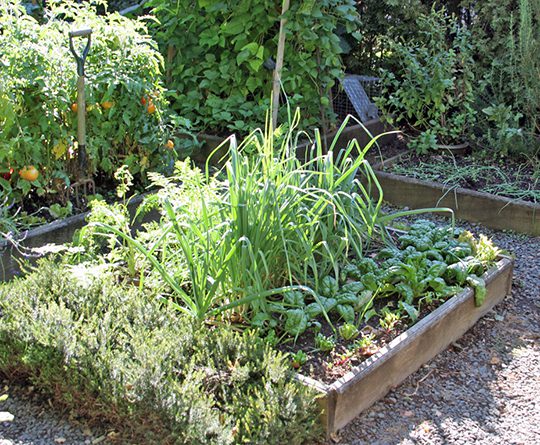What Every New Vegetable Gardener Needs To Know
What Every New Vegetable Gardener Needs To Know
In the past week several customers have asked a question and then concluded by saying, “I’m planting my first vegetable garden.” We want these customers to be successful with their veggie garden, so we’re offering these words of advice.
- If you’re making raised beds, don’t put landscape fabric or plastic on the bottom. Till up (or turn over with a shovel) the native soil. Do not fill your raised beds with potting soil or pure compost.
- Till up your soil before planting and work in compost or composted manure along with an organic fertilizer. The loosening of the soil is important because this allows the roots to spread into the area quickly.
- For raised beds, add soil first and put the mix of loam and compost on top of that. If the raised bed is going on top of lawn you can leave the grass and turn it under before adding soil on top.
- Water young plants every other day if it’s sunny but once they start to grow taper off the watering so that you’re doing it for a longer time less often. Most vegetable gardens do fine with a deep soaking (use a sprinkler or soaker hose, not hand watering) every five to seven days depending on the temperatures.
- Stay on top of the weeds. Mulch helps prevent their germination so get mulch down early for less maintenance. Small weeds are easily controlled with a hoe but the larger they grow the more time it will take to remove them from your garden. Weeds take resources like nutrients and water away from your vegetable plants
- Feed plants with an organic fertilizer at twice in the summer. Some of our employees use Neptune’s Harvest Fish and Seaweed Emulsion, and others use the granular Espoma products such as Plant-tone or Tomato-tone.
- Be prepared for the following pests and problems.
Holes in broccoli, cabbage or Brussels sprouts leaves: cabbage moth larvae. Mix spinosad (Captain Jack’s Deadbug Brew) with some Turbo (a spreader-sticker that helps the spinosad stick on the plant) and spray the plants every other week as they grow.
Dust newly planted plants or small seedlings with diatomaceous earth. This prevents slug and earwig damage when the plants are small and tender. Slugs can also be controlled with Sluggo Plus.
Spray all squash and cucumbers with Revitalize or another organic fungicide once a week starting when they are small. This helps delay powdery mildew, which most squash and cucumbers get in on the Cape.
Watch for signs of early blight on tomatoes. The lower leaves get spots and turn yellow. Spraying weekly with Revitalize or another organic fungicide from the time you plant them on can delay or prevent the disease. Once you see the signs of early blight you might want to switch to a copper fungicide.
Use bird netting to keep crows away from your tomatoes and either netting or “Harvest Guard” floating row cover to keep other critters from eating your plants. For protection from rabbits and woodchucks, a fence is the best protection.
8. Inspect your plants frequently and bring any questions into us right away. Most problems are easier to solve if the situation is diagnosed and dealt with early. We want to help you be successful so that you’ll have lots of fresh veggies to eat!
9. Pick vegetables regularly. Harvest beans and zucchini every other day in order to keep the plants flowering and producing. Pick cucumbers before they turn yellow and eggplants when they are dark in color.

Subscribe To Our Newsletter
Sign up for our weekly email about sales and events.
